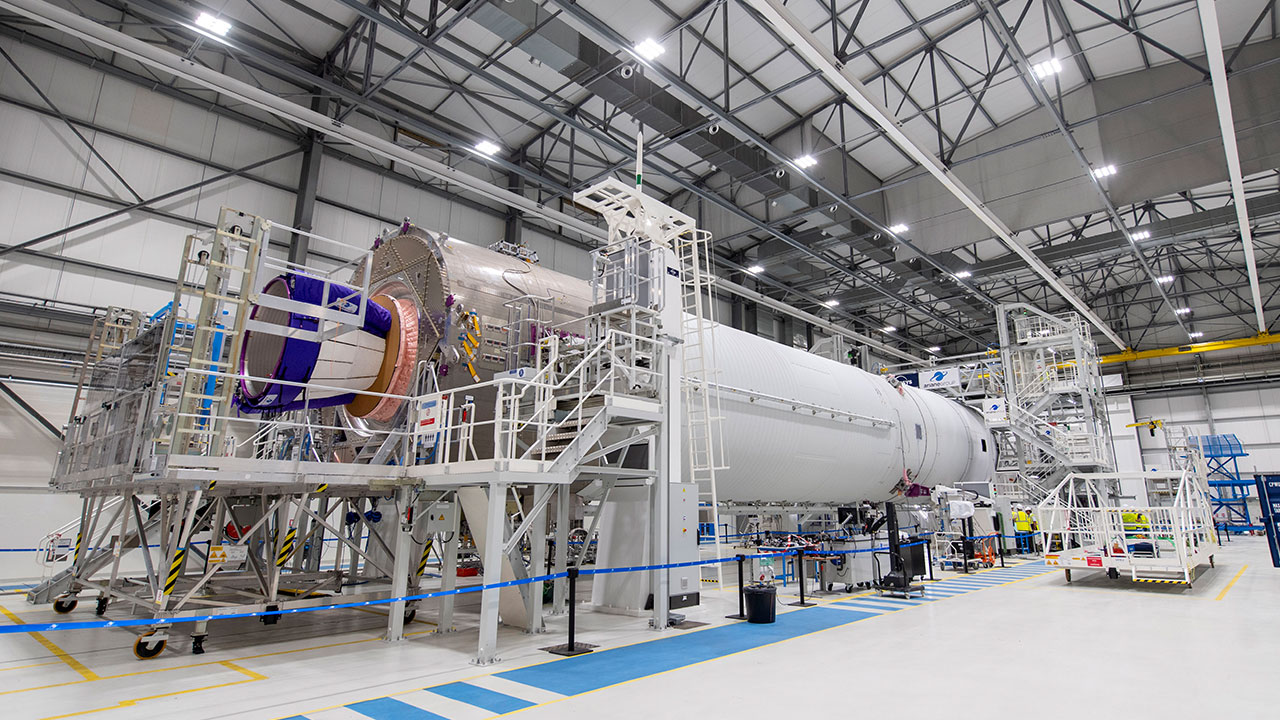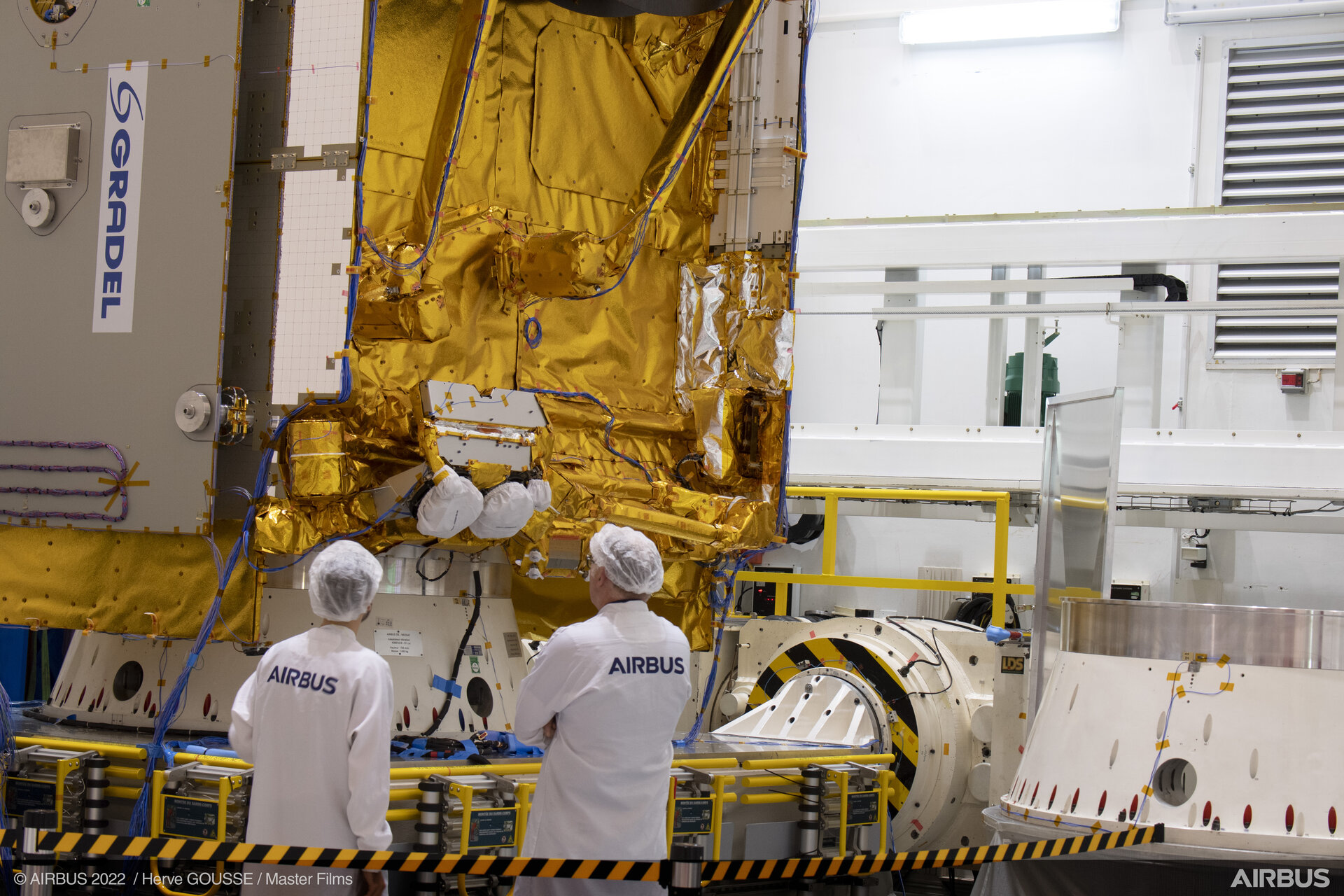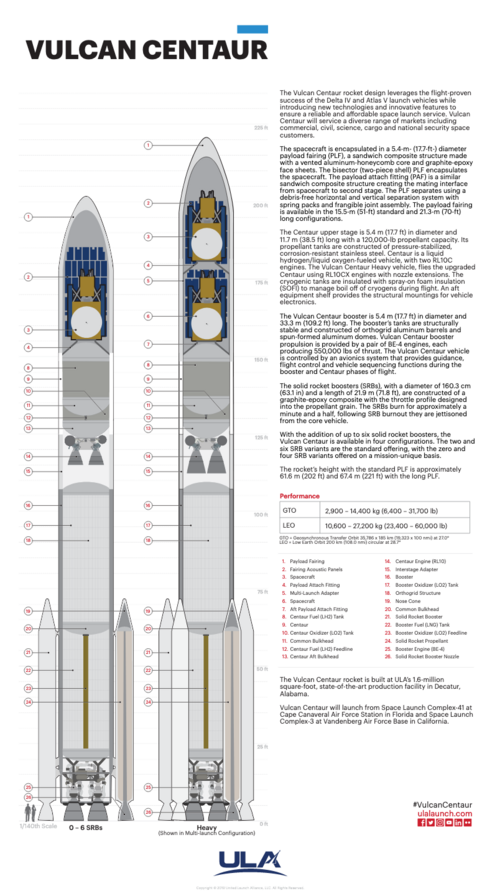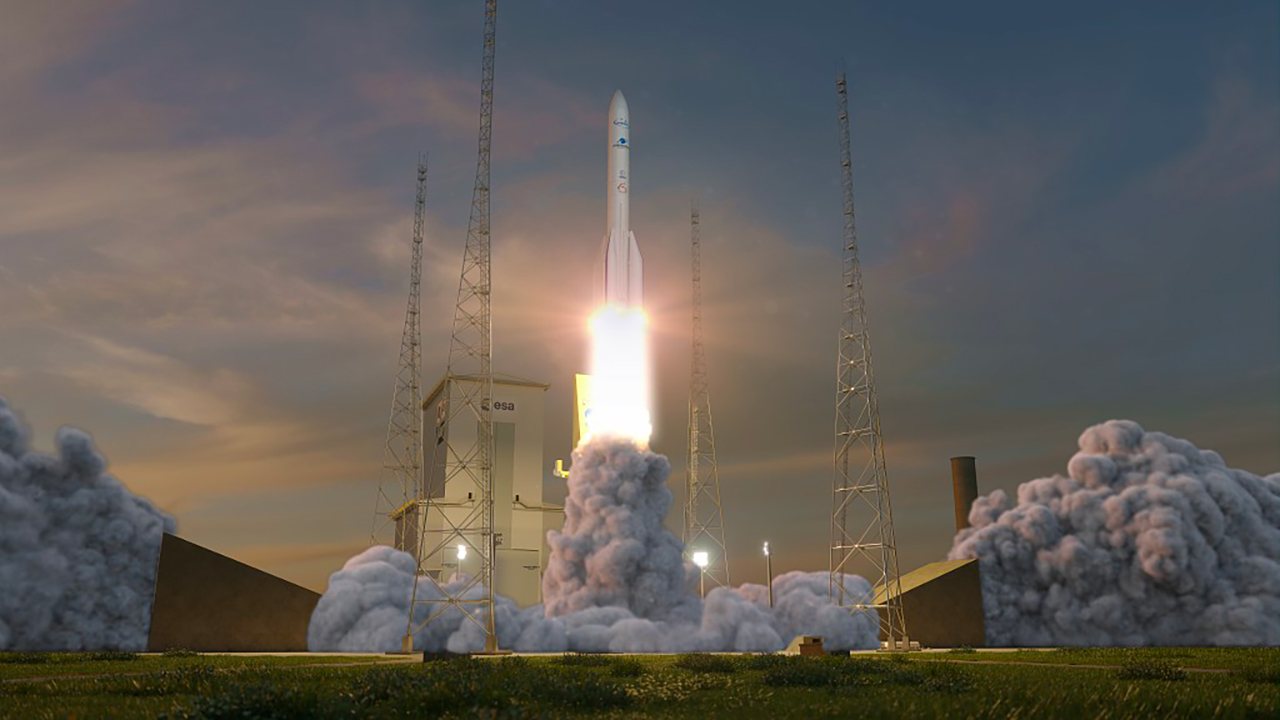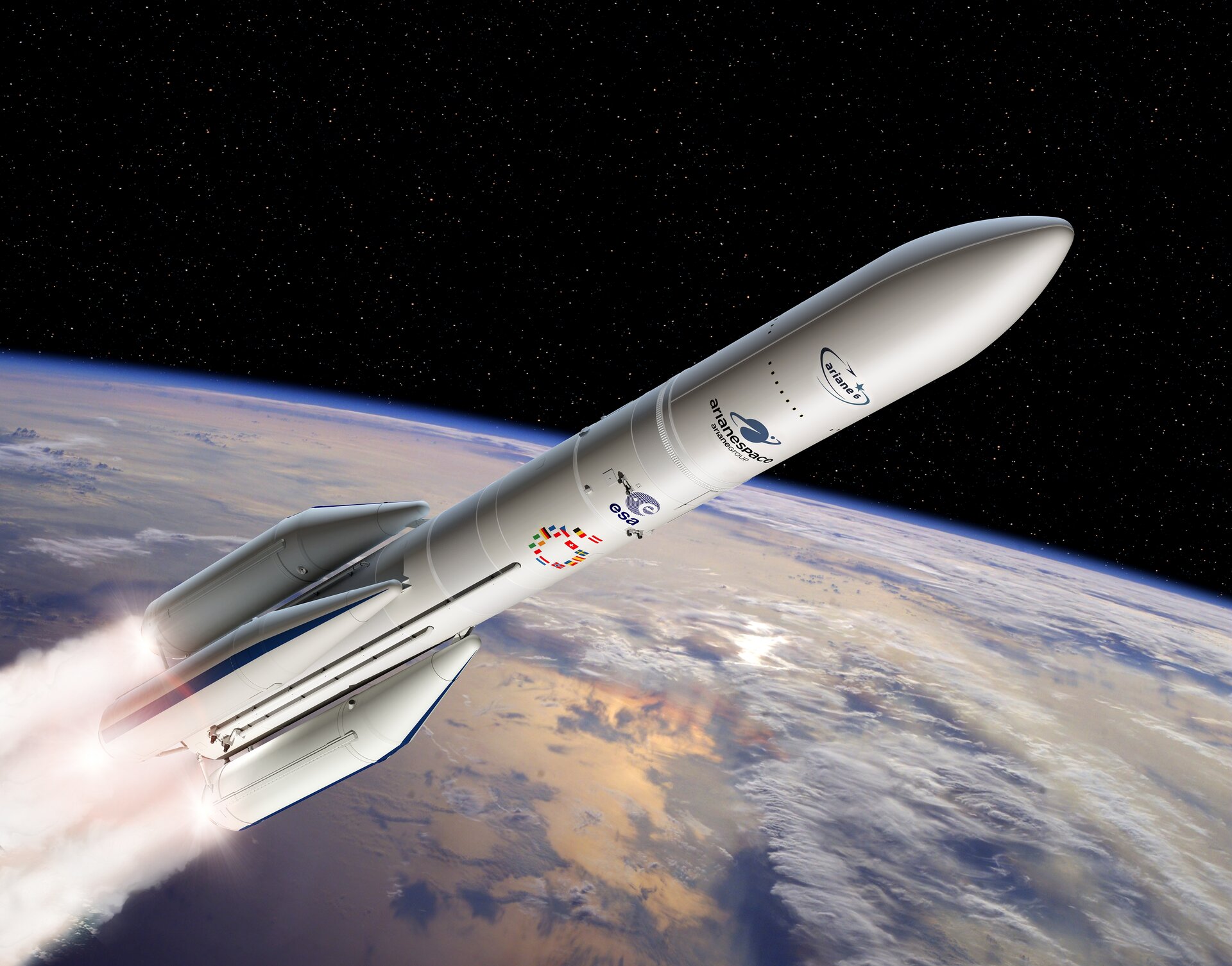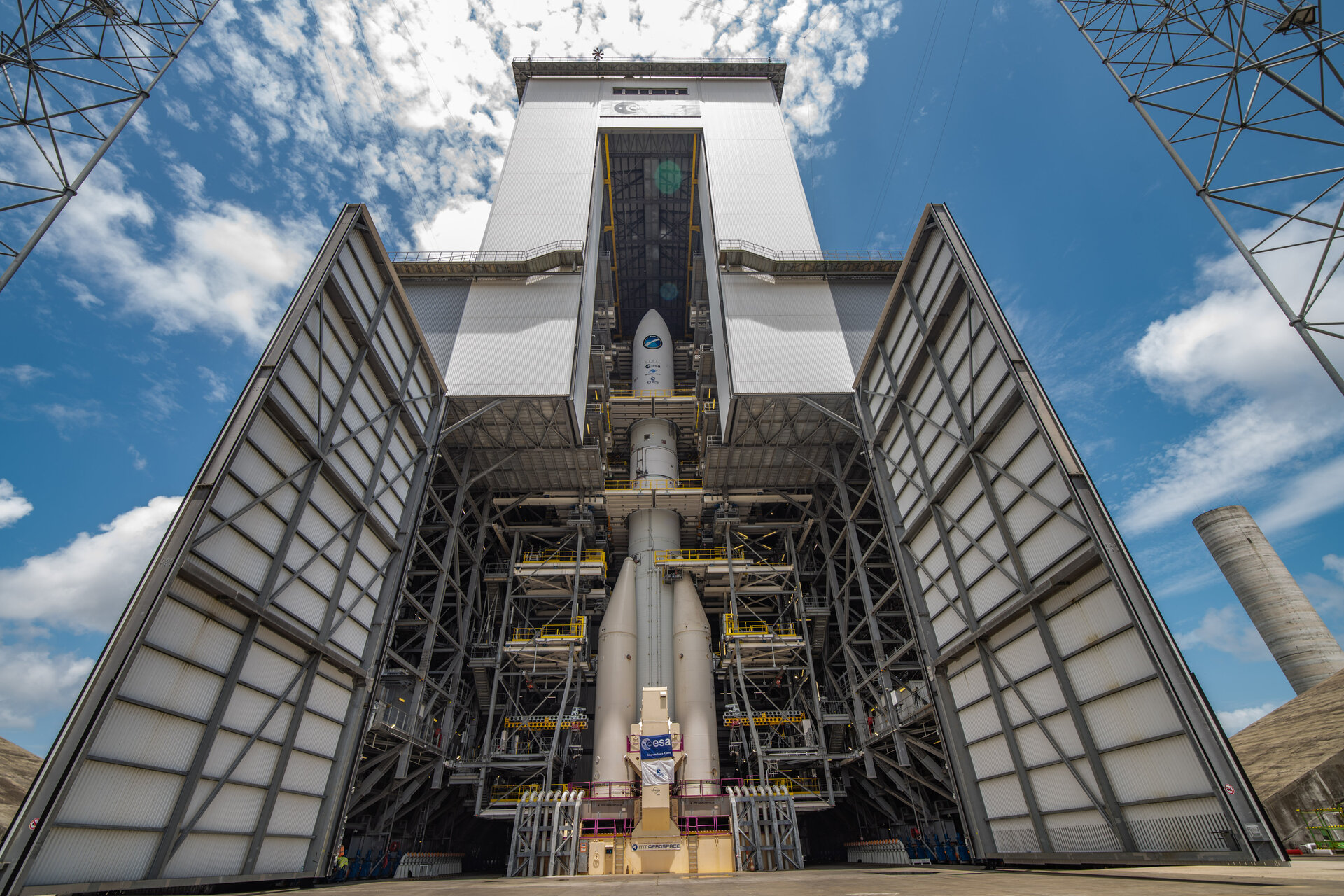17/10/2022
ESA / Enabling & Support / Space Transportation / Ariane
The Ariane 6 launch pad at Europe’s Spaceport in French Guiana now hosts for the first time a fully assembled example of ESA’s new heavy-lift rocket, following the addition of an upper composite to the core stage and four boosters already in place. The upper composite – consisting of two half-fairings and a payload mock-up with the structural adapter needed to join it to the core stage – made the 10 km trip from the encapsulation building to launch pad on 12 October.
Assembly, transfer and installation of an upper composite validates the Ariane 6 assembly process. Now, over the next several weeks, teams from ESA, ArianeGroup and French space agency CNES will make the mechanical, electrical and fluid connections which join this test model of the Ariane 64 configuration to the launch pad.
With Ariane 6 fully integrated with the pad, so-called combined tests will validate the rocket, launch pad and shared electrical, fluid and mechanical systems as a complete system. The combined tests include tank filling and drainage operations which guarantee smooth-running of a launch sequence. Flight and control bench software will also be tested.
Then, the launch pad will serve as a test bed for static hot-fire tests of the Vulcain 2.1 core stage engine, including aborted firings and long firings with disconnection. Vulcain 2.1 is derived from Ariane 5’s Vulcain 2.
Separately, static hot-fire tests of the Ariane 6 upper stage and its all-new Vinci engine began in October on a purpose-built test bed at Germany’s DLR centre for engine and stage testing at Lampoldshausen.
The reignitable Vinci engine allows Ariane 6 to deliver multiple payloads to different orbits on a single launch. After payload separation a final engine burn deorbits the upper stage so that it does not become a debris threat in space.
ESA Director of Space Transportation Daniel Neuenschwander underscores the importance of Ariane 6 as a successor to Ariane 5, which for more than a quarter century has provided Europe with reliable access to space: “Innovation is the key to maintaining Europe’s capacity to reach space with a fully independent launch system that is competitive and versatile.”
“With Ariane 6 we have Europe’s best engineers developing new technologies and manufacturing methods to build on the success of one of the world’s most reliable launch systems.”
On Wednesday 19 October 2022, a media briefing will be held in Paris at 1700 to detail Ariane 6 progress. Media can attend in person or by Webex; for details and registration here. The briefing will be broadcast to all interested viewers on ESA Web TV. Taking part will be ESA and its Ariane 6 partners: prime contractor ArianeGroup, launch operator Arianespace and French space agency CNES, which operates Europe’s Spaceport and is delivering Ariane 6 ground infrastructure.
Ariane 6 is a modular launch vehicle using either two or four P120C strap-on boosters, depending on mission requirements. The P120C engine does double duty, also serving as the first stage of ESA’s new Vega-C rocket.
Ariane 6 is project-managed and funded by ESA, which also acts as launch system architect. ArianeGroup is design authority and industrial prime contractor for the launcher system and CNES is prime contractor for the Ariane 6 launch base at Europe’s Spaceport. Arianespace is the launch service provider of Ariane 6.

